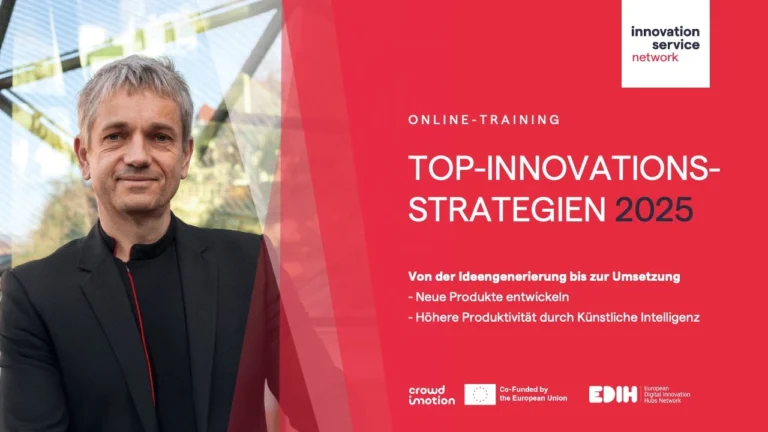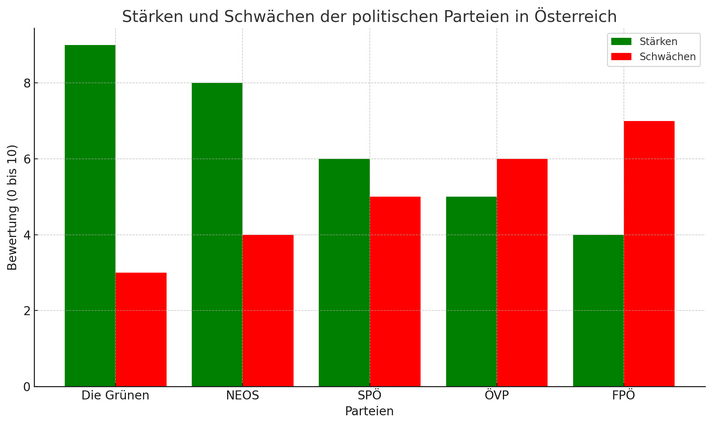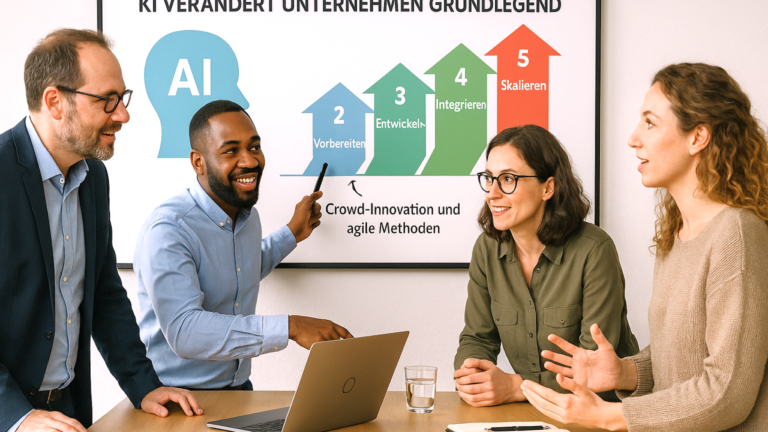
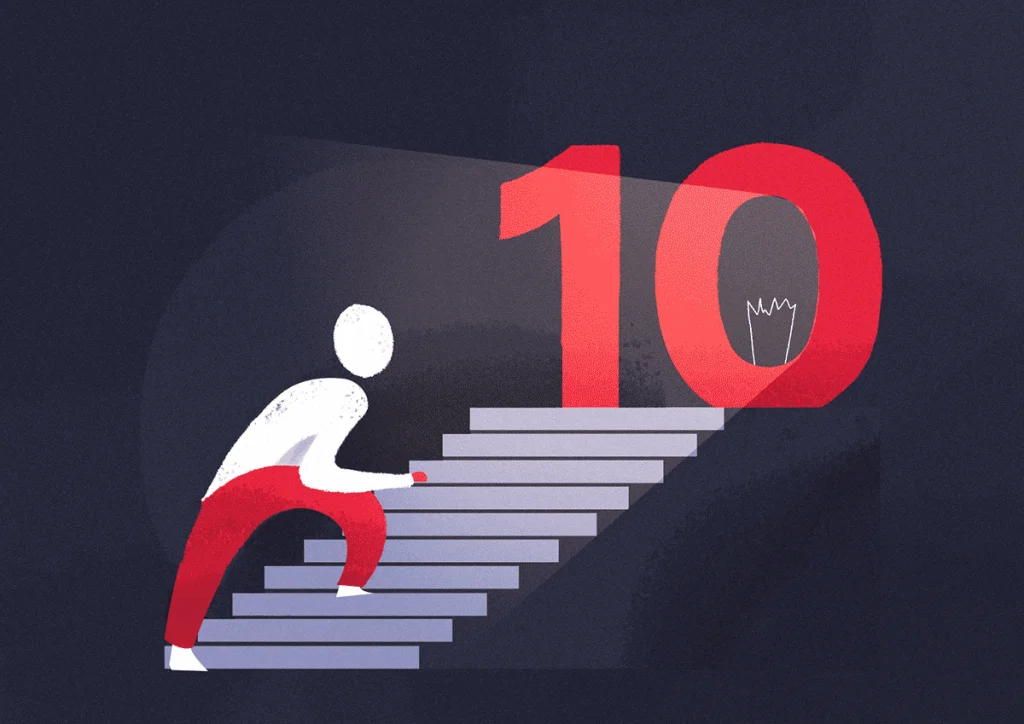
In 10 steps to an innovative company
Customer benefits and usability are crucial to the market success of new solutions. Many companies focus on their own services and not on customer needs and benefits. The question for "user-centered innovation" today is: How can new services make the everyday life or area of application of the target group easier and better?
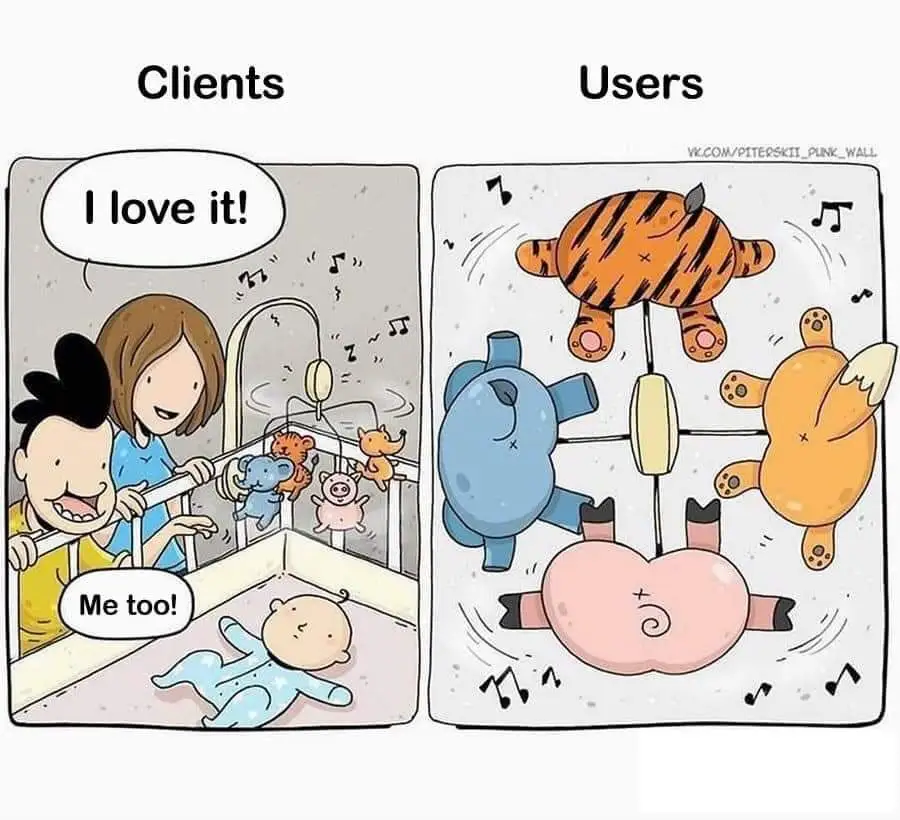
The picture shows very well how different the perception of a solution can be. While the parents look enthusiastically at the toy, the baby only perceives the "underside" of the figures. As the toy also produces a sound, it can of course still have an effect. If you look at other examples from practice, you will discover similar errors in thinking. In practice, "great innovation" is often equated with "high complexity". In reality, however, we are increasingly seeing that simple, reduced solutions are penetrating the market more quickly.
My "aha moment" about service design was generated by Birgit Mager at an innovation event organized by Industriellenvereinigung Oberösterreich in 2009. We were both invited as speakers and Birgit's contribution was the first time she introduced me to the methodology, which I had previously only known as "open innovation": Service Design is about completely aligning the solution with the wishes and needs of the users. In the meantime, the Service Design Network initiated by Birgit has become the first point of contact for "design thinkers" in a globally active network.
The overarching "mindset of design thinking" builds on the mindset, sensitivity and methods of designers to solve problems in an interdisciplinary way. Service design focuses on the development of services. An optimal design for a service is based on an exact understanding of the customer's needs and wishes and the benefits associated with a solution. For me, this perspective means that service design, but also industrial design, address specific focal points within the design thinking framework.
Since many solutions today consist of hardware (product) and personal or digital services, this results in a universal framework for designing innovation processes. Essentially, it is about gaining a deep understanding of the needs and challenges of users and developing new solutions on this basis.
The method set is made up of different design and creative methods. However, the focus is always on customer benefits and not on complex engineering services. Individual methods deal with customer profiles (personas) or the "customer journey" through the solution elements.
During a customer journey, designers and developers often try to take on the position of the end user. For example, you put yourself in the role of a 75-year-old user of an airport's mobility services. If this user also comes from abroad and does not speak German, you will very quickly realize that some touch points are difficult to understand. The foreign user will not understand the instructions. Due to their age, they may also have health restrictions that make barrier-free use more difficult.
Another method is designed not to navigate through the process yourself, but to observe other people during the process and question them afterwards. This can also provide a deep insight into the design of the service provision and the service sequence.
For the design of new solutions, an ideal-typical process can be designed from the available methods, which is run through in the form of workshops with several people and specialist disciplines. In the university course "Digital Innovation Modelling" (DIM) at the Universität Graz, we combined methods from design thinking with business model development methods and digital tools for crowdsourcing and online brainstorming.
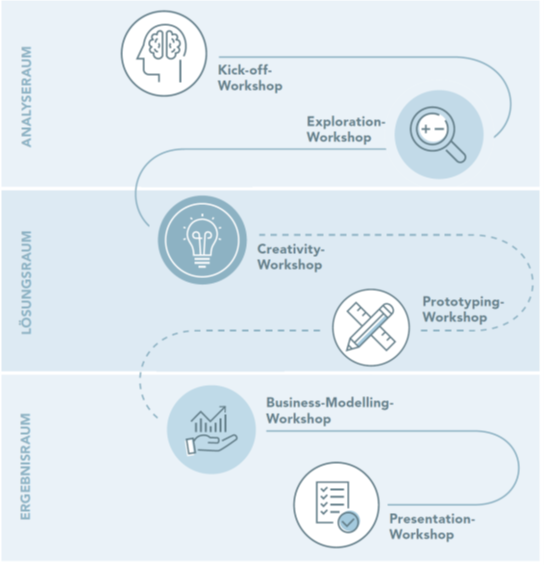
This means that at the end of the DIM process, there is not only a design prototype, but also an initial approach for the (digital) business model. The design of customer experiences is also an important differentiating feature in design thinking. The focus on new services, in addition to products, leads to thinking in terms of solutions.
Design thinking is a flexible approach that can be applied to a variety of problems and challenges in innovation management . By focusing on the needs and perspectives of users, design thinking can help to develop innovative solutions that are actually tailored to the needs of users.å
As the importance of services in business models increases, the professional design of services for different industries is becoming increasingly important. Design thinking can also be combined very well with "open innovation" processes, where users are invited to contribute ideas from an application perspective via digital innovation platforms.
What proportion of the overall solutions in your company are services? Do you already have experience with service design or "design thinking"? How many of the design prototypes are already on their way to implementation?
As always, I look forward to feedback and wish you a relaxing and creative Sunday!
Reinhard Willfort, Innovation Doctor, www.willfort.at
10 steps to an innovative company: The 9th article is about the customer-centered development of services or solutions. Design thinking and service design are increasingly being used in innovation projects. It is important not to stop at the prototype, but to invest in implementation and business modeling! Do you already have experience with service design or "design thinking"? How many of the design prototypes are already on their way to implementation? You can read about my practical experience on this topic in today's newsletter.



